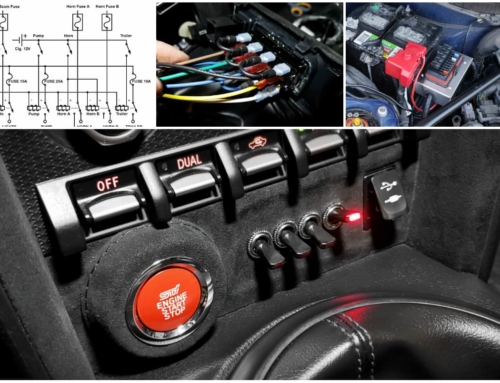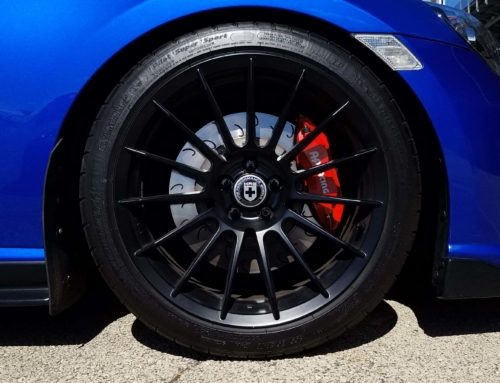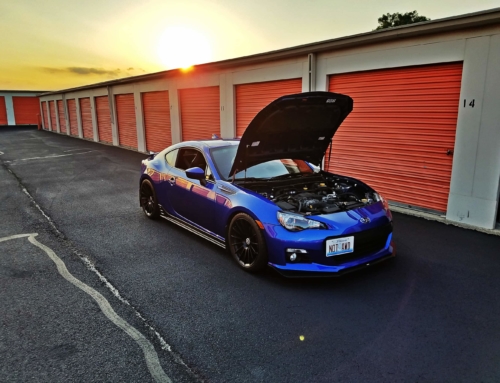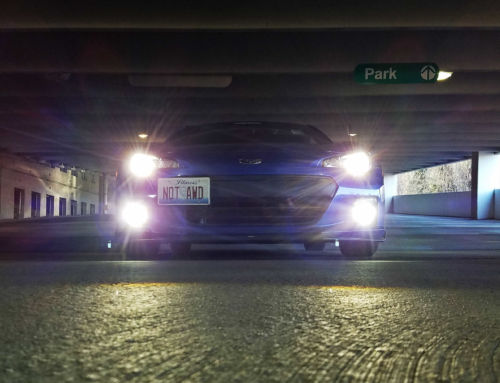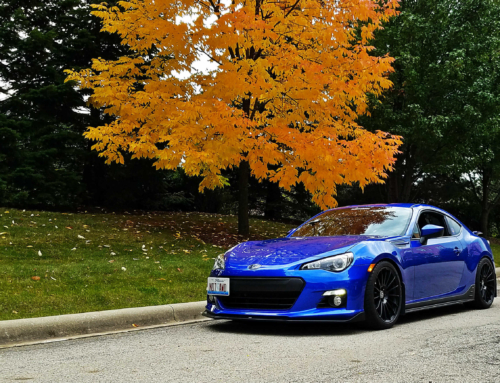I will start this post off by stating that I am not the sort of person who drives around honking my horn left-and-right at every person who does something stupid, or looks at me funny. I hate those kinds of people. I’m of the opinion that a horn is a last-resort device to avoid a collision, or alert another driver to an immediate danger. It is not to be used to voice your displeasure, or impatience.
Having said that, the stock horn on this car sucks. It is one of those pitiful, cheap, anemic, “meep-meep” sounding horns that doesn’t get anyone’s attention at all. I’m of the opinion that the smaller the car, the louder the horn should be, which mean this car should have a decent horn. It’s small. It’s low. It’s not uncommon for people to completely not see me at all. I want my horn to actually get their attention. As such, I decided to do something about it, and started looking for alternatives.
The most popular option folks tend to go with is a set of Hella Supertone or Sharptone horns. These are basically larger, louder versions of the OEM “disk” horns. They are indeed louder than stock, which solves the volume issue, but in my opinion, the shrill tone they emit still sounds terrible, and cheap. You can see what these look and sound like in this YouTube clip (skip to 1:35 for the sound.) Not being a fan of the Hella horns, I decided to look elsewhere.
I eventually found what I thought would be a great, and relatively unique alternative. In the 80s and 80s GM offered an optional horn upgrade on some of their models. The upgrade got you four, loud, AC Delco horns tuned to A,C,D,F (like a train horn), which results in a “Cadillac Horn” type of sound. You can order them online from a gentleman who restores them and sells them on Ebay. (Not sure if that link will continue to work, so feel free to reach out to me if it doesn’t.) I figured I would give these a whirl, as they would be loud, and make a nice sound too.
Installing them required removing the front bumper of the car. This is something I had never done before, and I was admittedly a bit nervous, because I’ve heard plenty of horror stories about people taking the bumpers off of these cars, only to find that they don’t sit right when reinstalled. I dug in, though, and using nothing more than a screwdriver, and a 10mm wrench, I soon had the bumper removed.
With the bumper removed, I had hoped to find a good location to install the horns. As you can see from the lead photo in this image, they are quite a bit larger than the factory horns, and take up quite a bit more space. In any other type of vehicle, there would be plenty of room to install these somewhere behind the bumper, hidden from view, but open to the surrounding environment. I quickly discovered that there would be no easy way of doing that with this car without a lot of custom fabrication of brackets which I did not have the ability to do. The laziest solution would have been to mount them to the main crash beam, but they would have hung down, which would not only have looked incredibly ugly, but would have also obstructed airflow to the radiator.
You can see the windshield washer fluid reservoir in the image above, at the front left corner of the car. The same space is empty on the other side of the car, and so this wound up being the only reasonable place to place the horns. I also did not want to make any permanent changes to the vehicle, nor did I want to modify the stock wiring. In the end, I was able to find several existing holes in this location that I was able to use to affix all four horns on their brackets. I also removed the two stock disk horns, and used some quick disconnects to plug the new setup straight into the factory wiring. You can see the results below:
The rest was just a matter of wiring. I didn’t want to power these horns off of the stock relay because I wasn’t sure what the stock relay was designed for, so I got a separate relay, ran positive and negative leads straight to the battery through the fender, and then wired them all together in parallel. After that, it was simply a matter of re-installing the bumper (which went back on fine with no issues, so yay!) and then seeing how it all worked. The end result was… bittersweet. Here’s a clip of what they sound like:
Sounds great, right? Only one issue. As I mentioned earlier, I installed them in the right side of the bumper, in the opposite location of where the washer fluid reservoir is located. If you look more closely at that photo, you’ll notice a vertical black barrier just to the left of the washer fluid reservoir in the photo (with a piece of grey foam at the front.) The purpose of that barrier is to seal off that compartment, in order to channel air coming through the front grille straight back to the radiator. That’s cool, but it also means that those side pockets are effectively sealed off from the outside world. As a result, while the horns may sound loud in the clip above, they actually aren’t, since they’re muffled.
In the long run, I might look into doing the same thing I did in my last car, which was to install a more complicated, “train horn” system, complete with an air compressor, air tank, and four rather large trumpets. I’m not sure where I’d fit all the equipment in this car, though, but those air-powered horns really got folks’ attention 😛



